Dear Steemit friends :

To most inhabitants in the Far-East, Taiwan is commonly known as a food paradise. Even with the diverse food offerings in the vast expanse of China, Taiwan is often the first place Chinese connoisseurs think of when they wish to indulge on the more localised food offerings of the Formosan island.
For this edition of Miss. Delicious we'll be headed to the northern part of Taipei just a few kilometres East of the infamous night-market, Shilin, to the Silks Palace Restaurant. In-fact, this area is primarily known for the National Palace Museum - one of the largest museums in the world in terms of the numbers of artefacts on exhibit.
The National Palace Museum is the home to over 700,000 artefacts from ancient imperial China, they range from the neolithic age all the way to modern and represent over 8000 years of Chinese history.
Because of the historical and cultural importance of the National Palace Museum, it is a must visit for guests to Taipei and thus, the Silks Palace restaurant (which is beside the Museum) has become an equally alluring restaurant featuring the fusion of Chinese art and Chinese cooking.
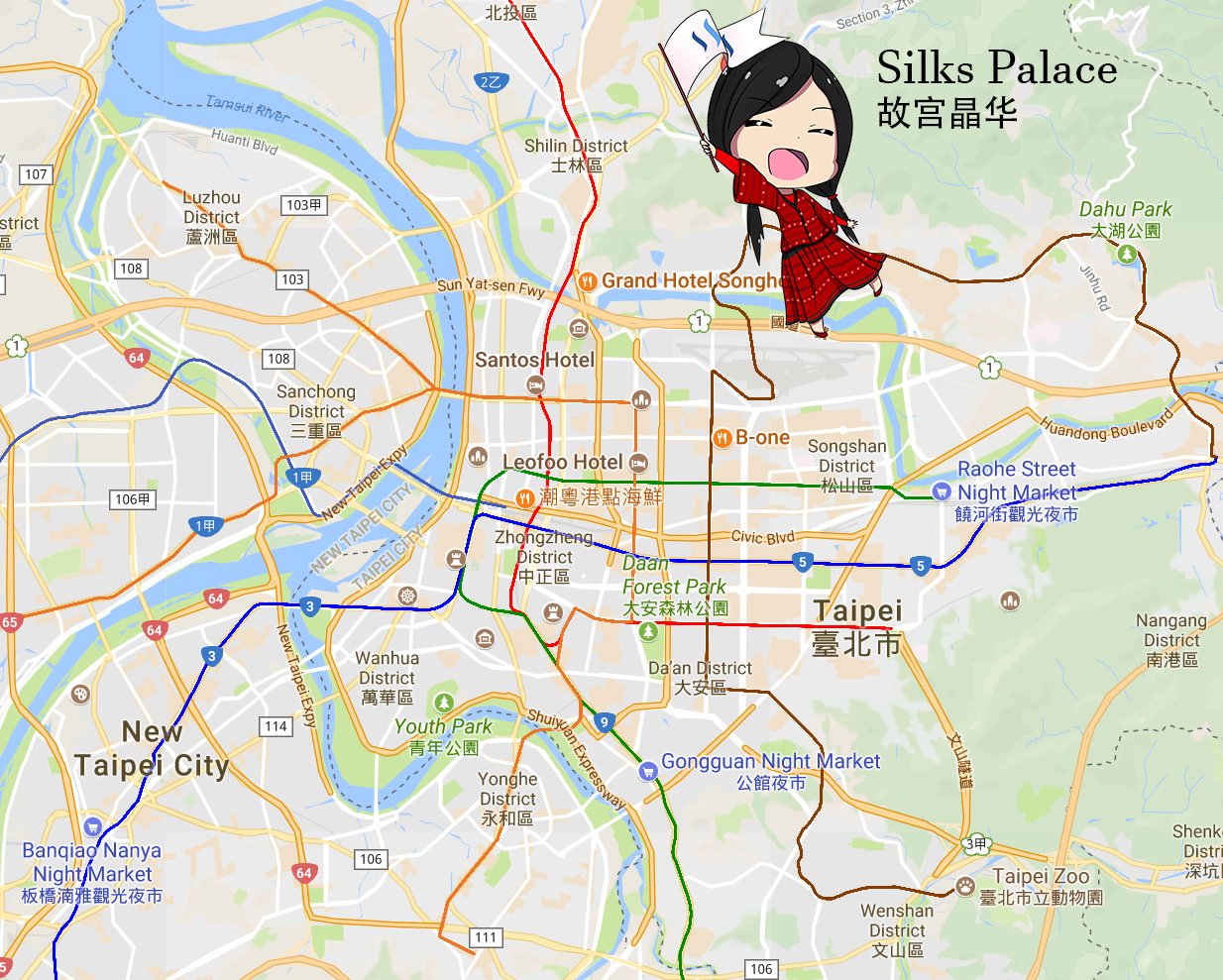
With such an important collection of treasures by the doorstep of the Silks Palace Restaurant, great care has been taken to design the restaurant building such that it's presence blends in with the surrounding area, taking on the character of the National Palace Museum as well as respecting the environment.
From the outside, the building looks almost like a greenhouse with vines just behind the clear transparent glass. The architect Ren-shi Yao intended for the building to respect the lush green surroundings but also, diminish the impact it has on it's neighbouring buildings.
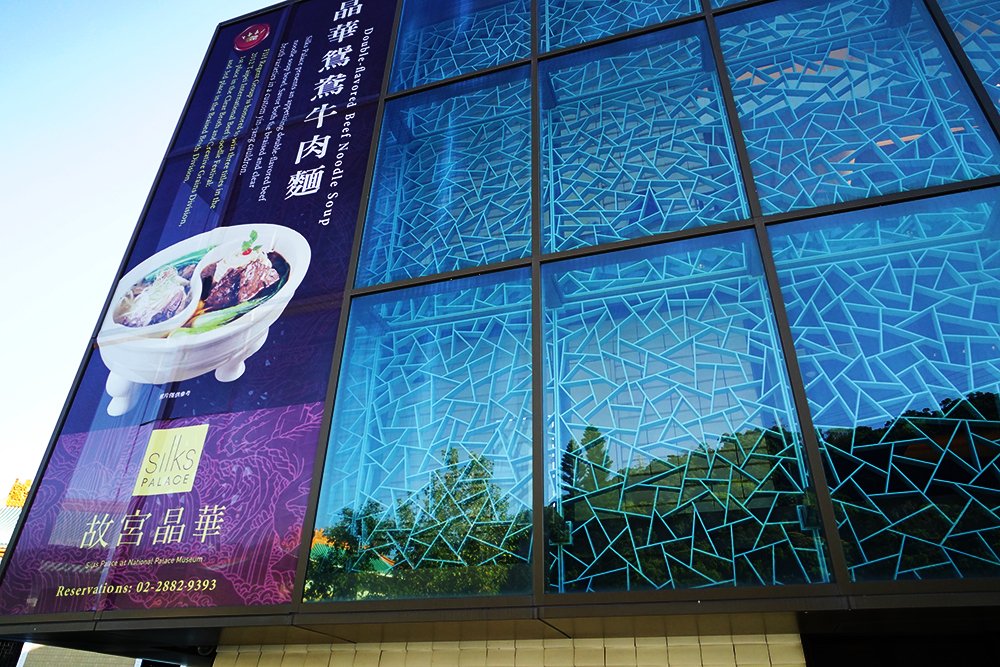
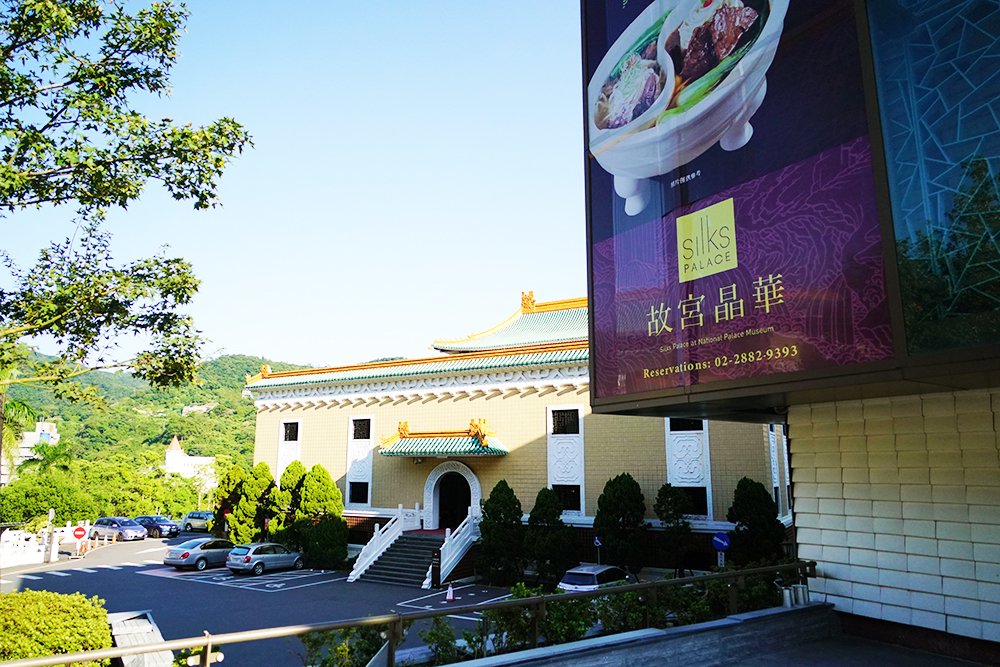

Let's go inside!
Escaping the crowds of people standing outside, you'll be pleased to know that the restaurant's high end appearance and sheen does well to retain a feeling of exclusivity. However, despite it's classy appearance, it feels neither drought or too busy.
Most visitors will come either for lunch before visiting the museum, or for dinner after the museum closes. In either case, when you walk inside, you will be dazzled by very distinctive interior lighting which draws attention to the open layout of the restaurant.

Guests are seated with plenty of space to separate between tables. Obviously this is a really good for anyone who feels claustrophobic in dining areas packed with people.
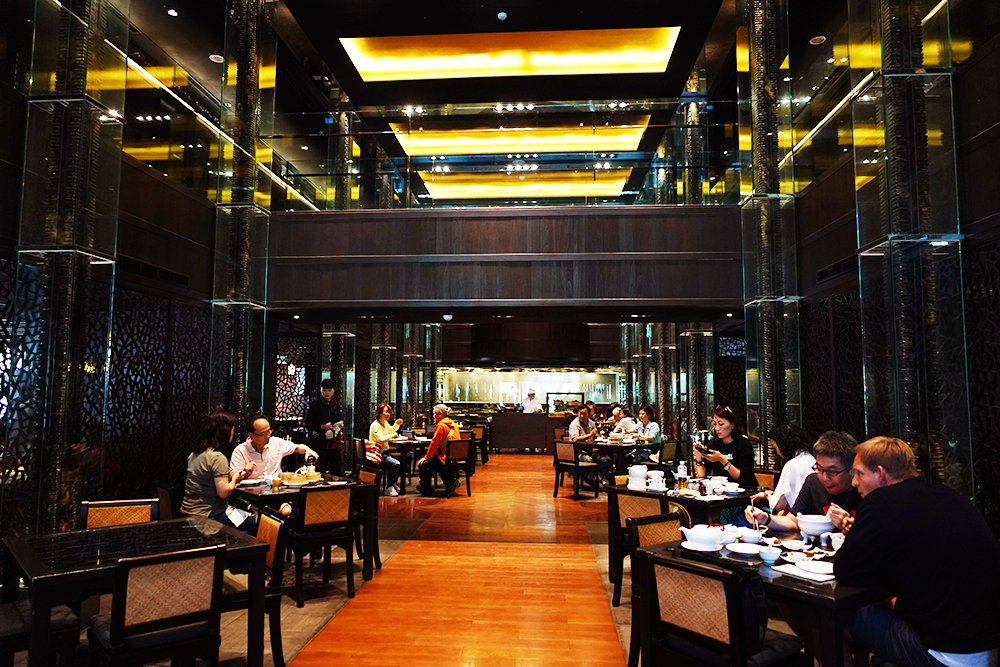
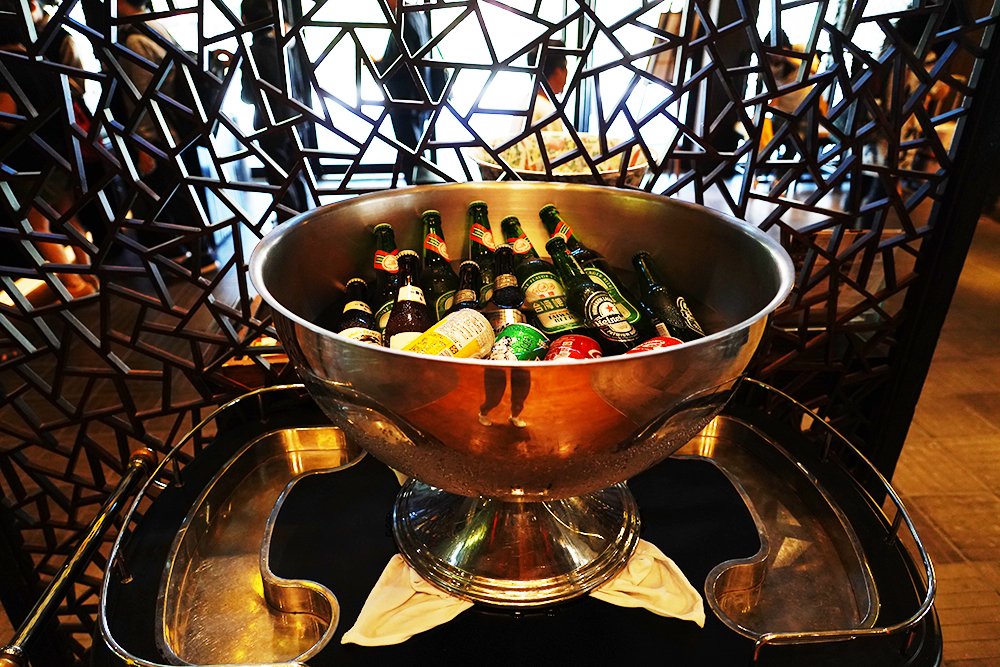
Like the artificial vines we saw outside through the glass windows, the same web of vines are used to divide between different sections of the restaurant. In terms of the seating choices, it really comes down to whether you prefer a view of the natural green forests on the outside, or the intricate interiors of the restaurant on the inside.

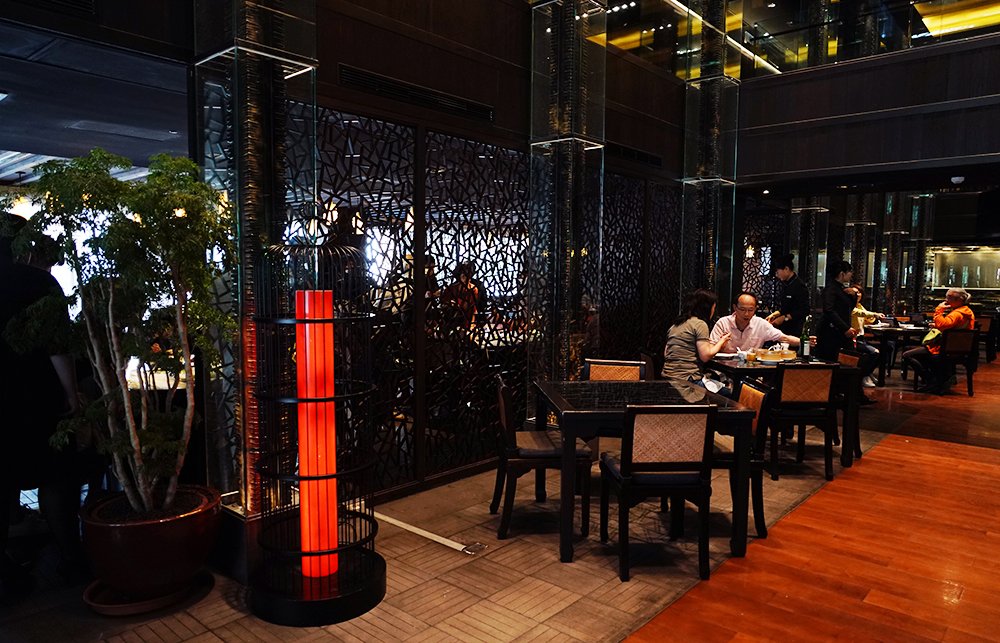
In the back corners of the restaurant, you will find the traditional large round tables which are preferred by people who come in groups of 4 or more people.
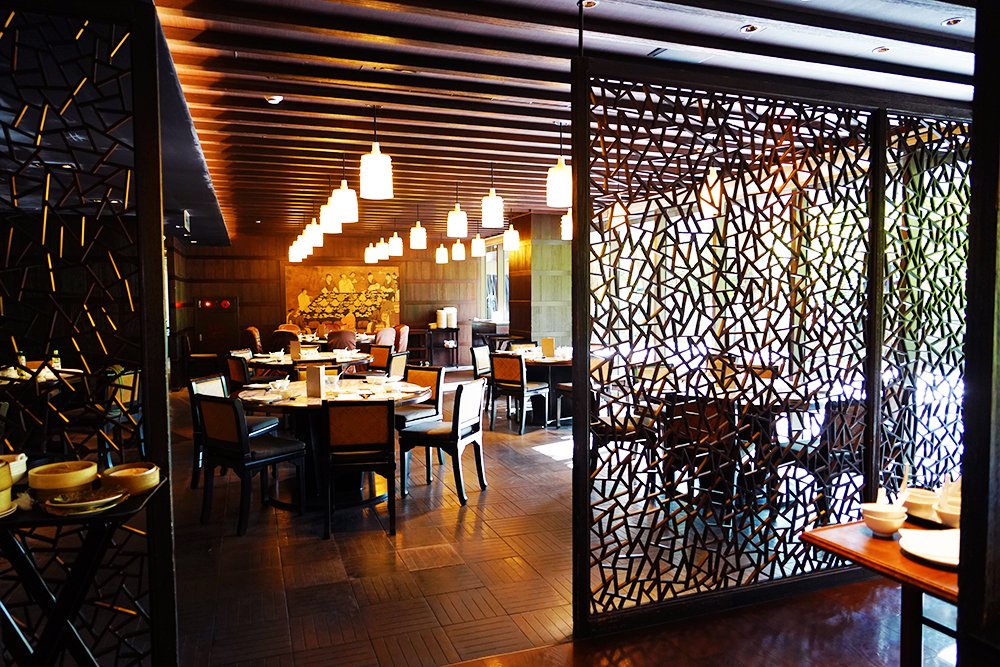
Final preparations to the soup, noodle and steamed dishes are made on a table just beside the dining area. Garnishing the food with the last touches or even serving things such as soup and congee from this intermediate table means quick serving to the waiting guests.
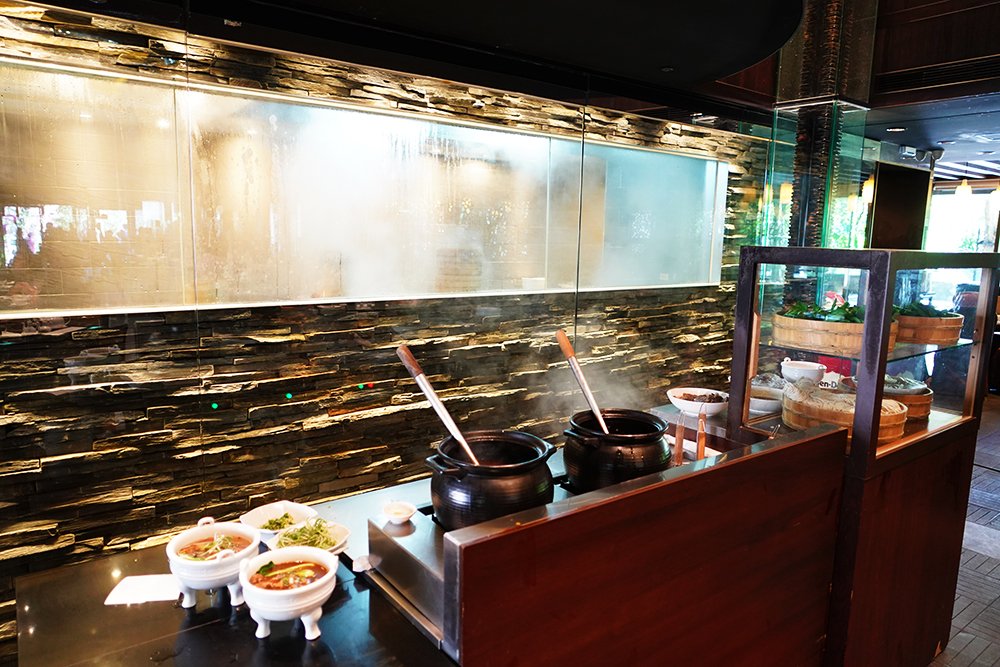
This is the largest table in the restaurant which as you can see has space for up to 10 people. This kind of traditional table has a rotating centre piece and is usually served by a dedicated team of waiters and waitresses. I also noticed the traditional painting on the wall which shows either people from the Ming or Qing dynasty having the ancient equivalent of afternoon tea.
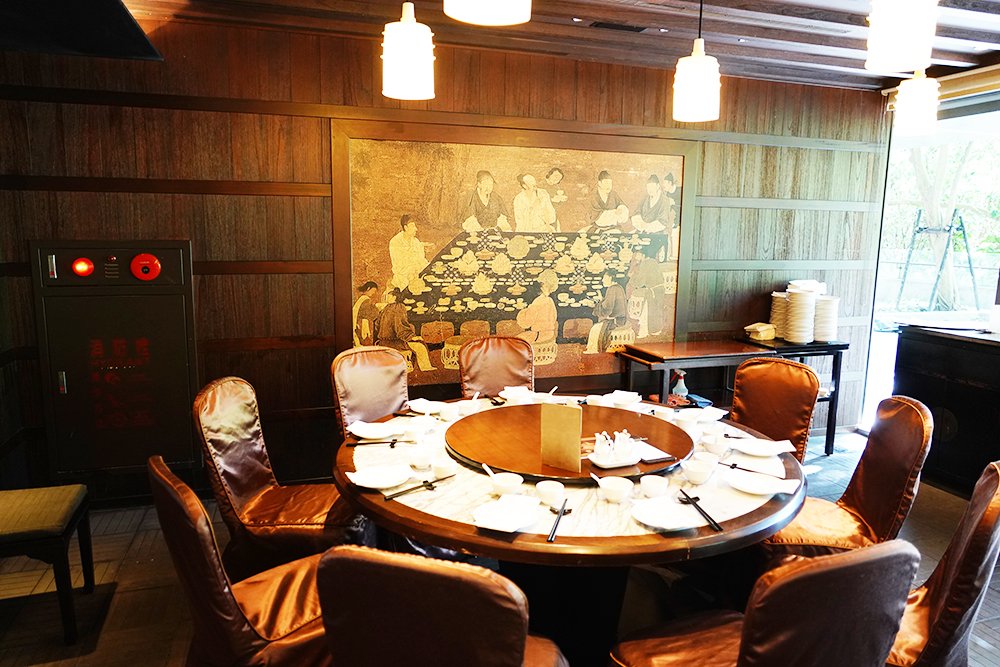
This is an example of a fine white and blue porcelain, otherwise known as Legendary Porcelain. Of course, this is an imitation of the real piece which can be found inside the museum. Still, it is a very beautiful example of the intricate detail that the ancient people used to paint on their porcelain vases.
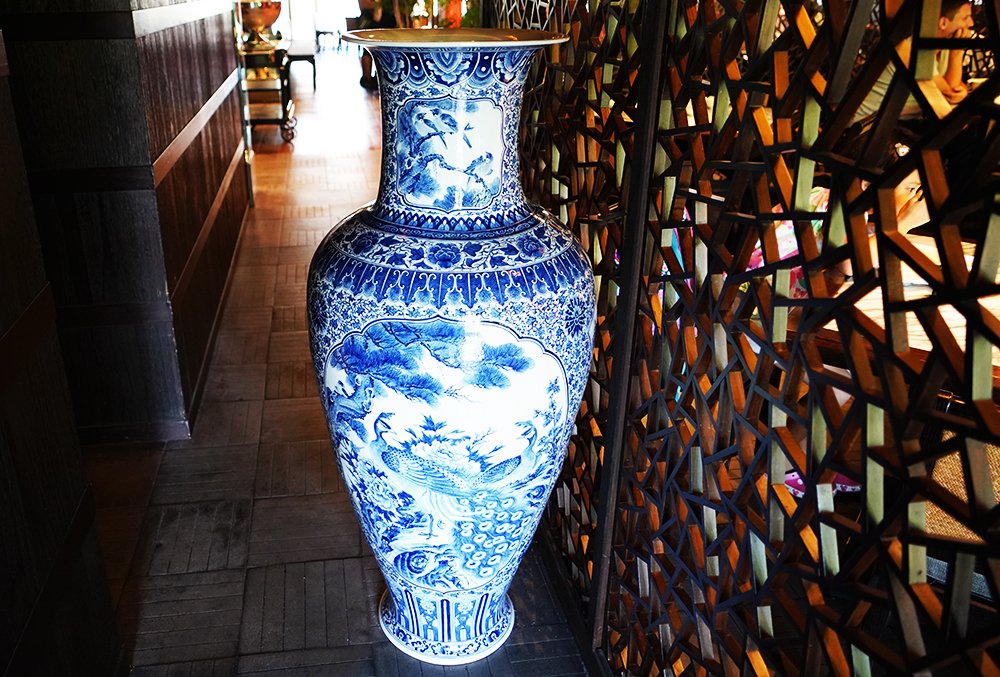
The Menu

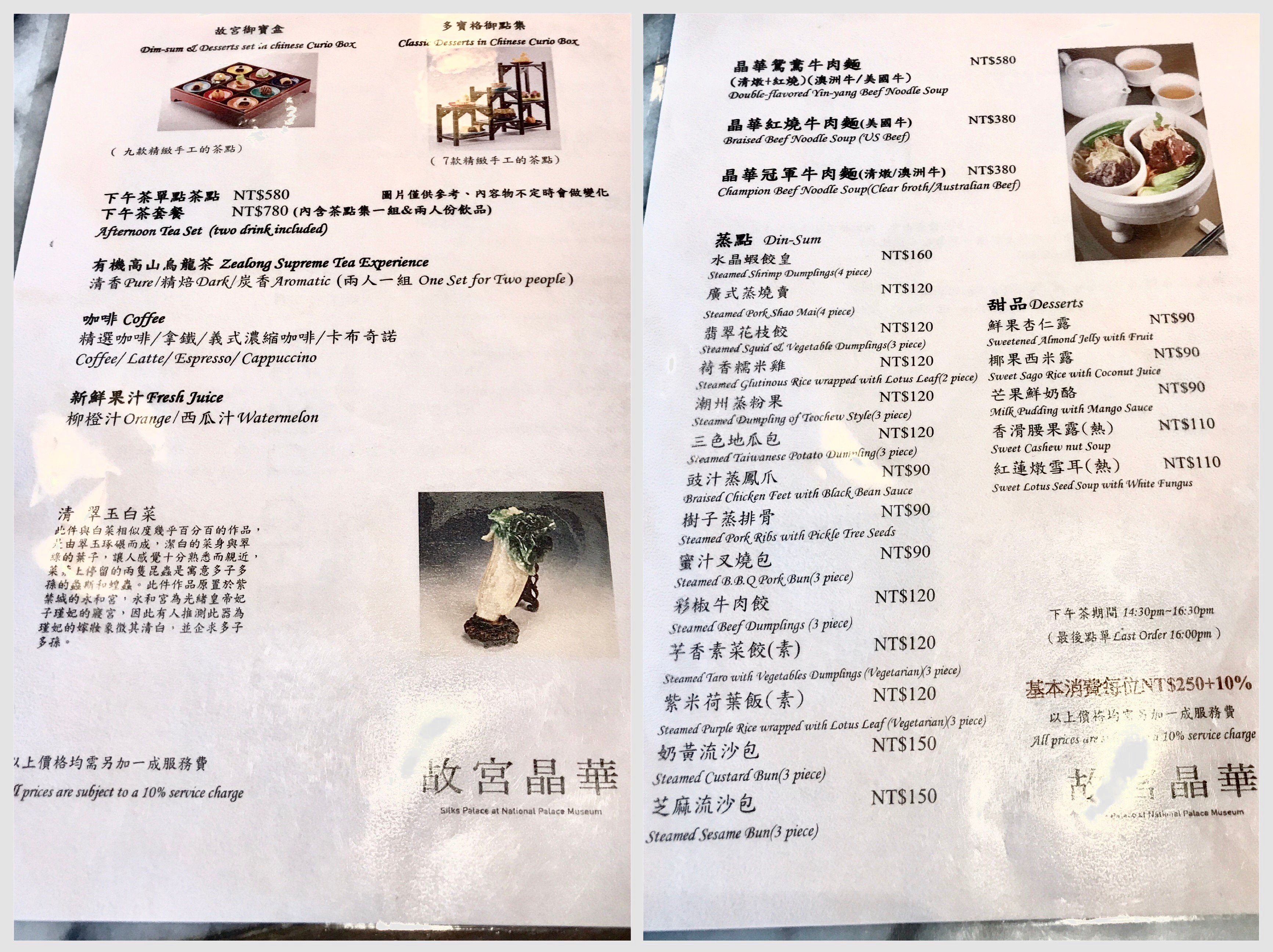
The art of drinking tea
As we saw in the painting above, drinking tea has been a past time of the Chinese for thousands of years. Over time, drinking tea has itself developed a tradition with it's own sets of etiquette. Taking a look at all these pots and bowls, can you take a guess at what they are all used for?
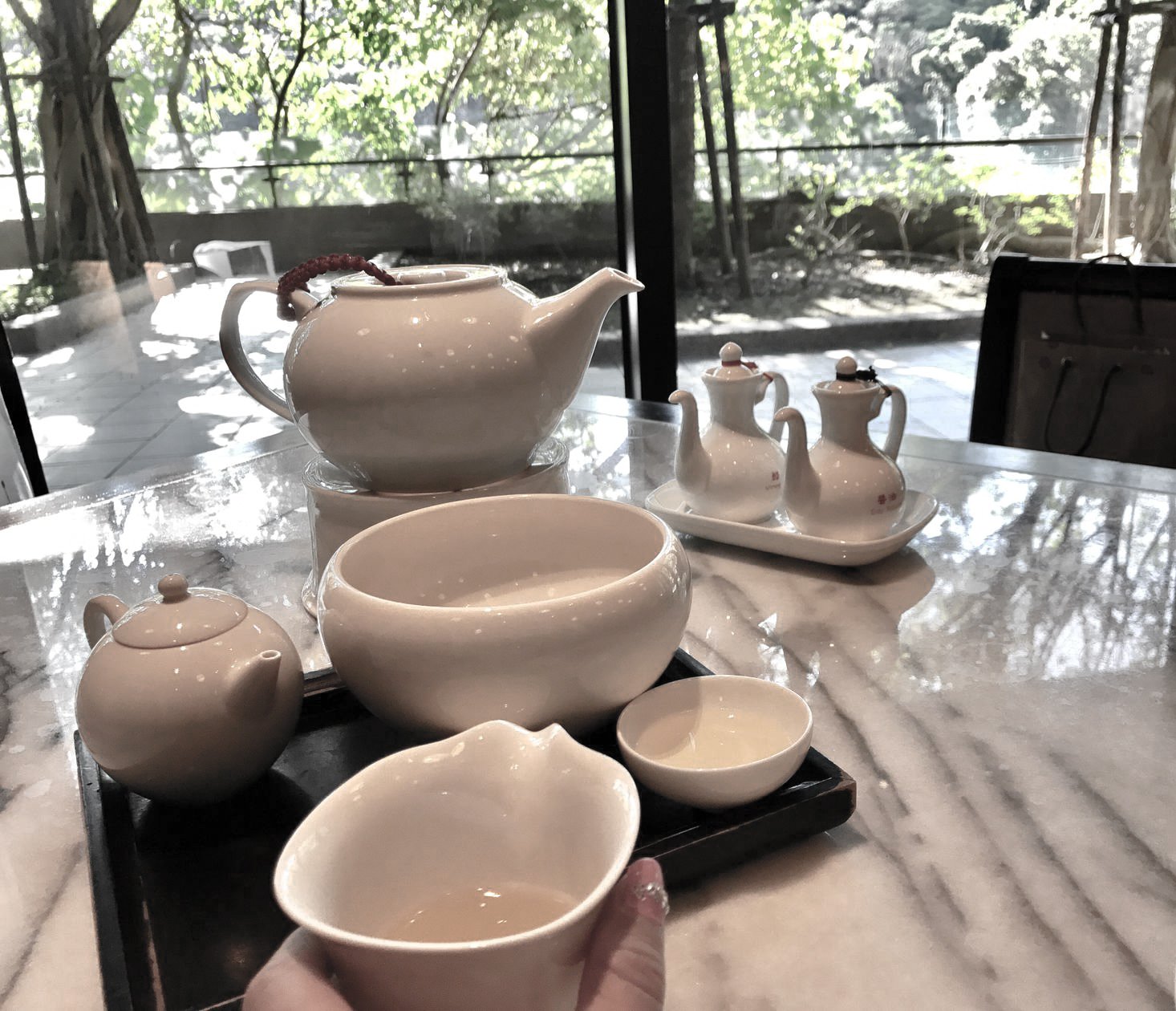
Actually, the exact etiquette varies from period to period, and place to place, but this particular arrangement of teapots, bowls and cups are used as follows :
The largest pot is where the hot water is kept. It has it's own stand with a burning flame underneath to keep the water hot.
The smaller teapot is where the tea leaves are. Hot water from the large pot is poured into the smaller pot to brew the tea.
Once the tea has brewed, it is poured into the larger cup to avoid over saturation of taste if kept in the teapot.
From the larger cup, the tea is poured to the smaller cups and ready to be consumed.
Finally, the large bowl is used to discard the tea from the large cup if the tea has become cold.
Repeat these steps as necessary!
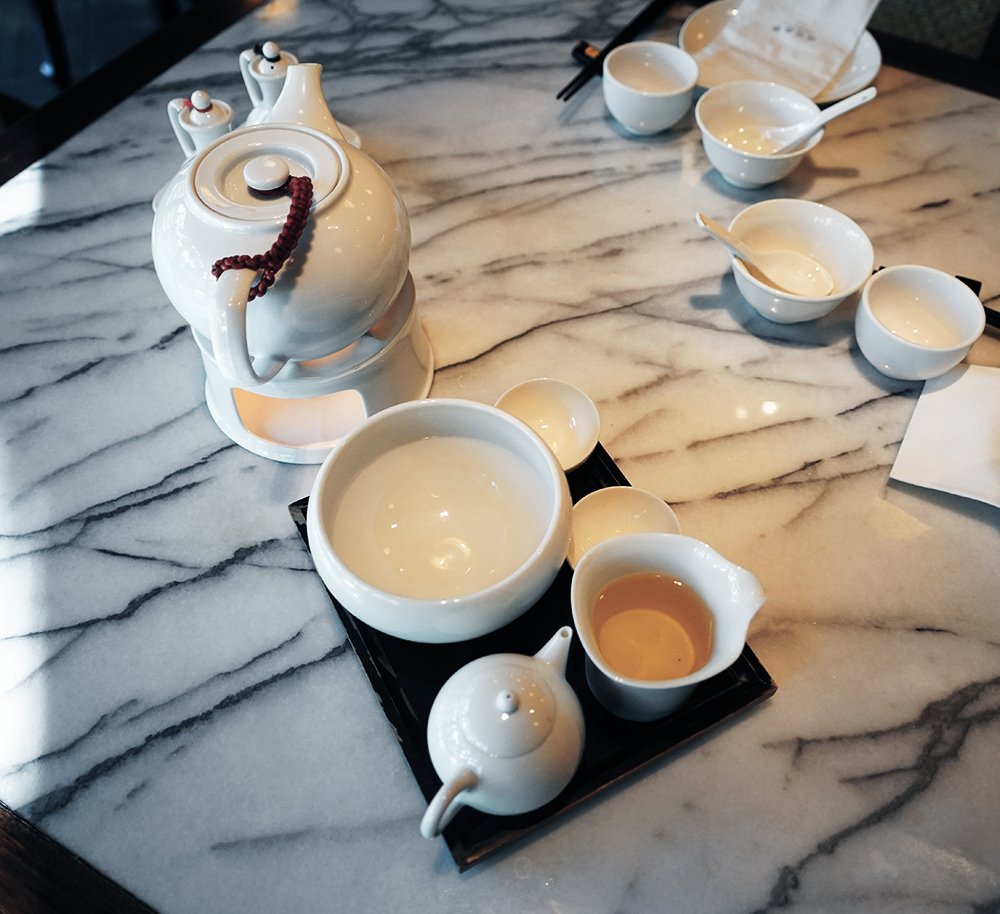
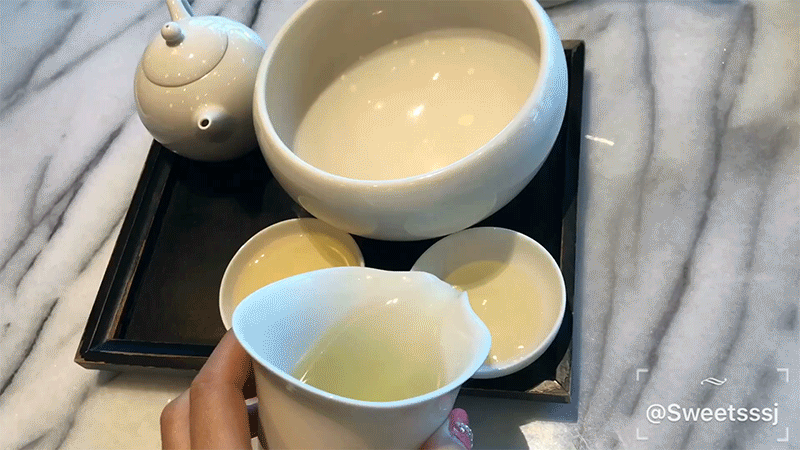
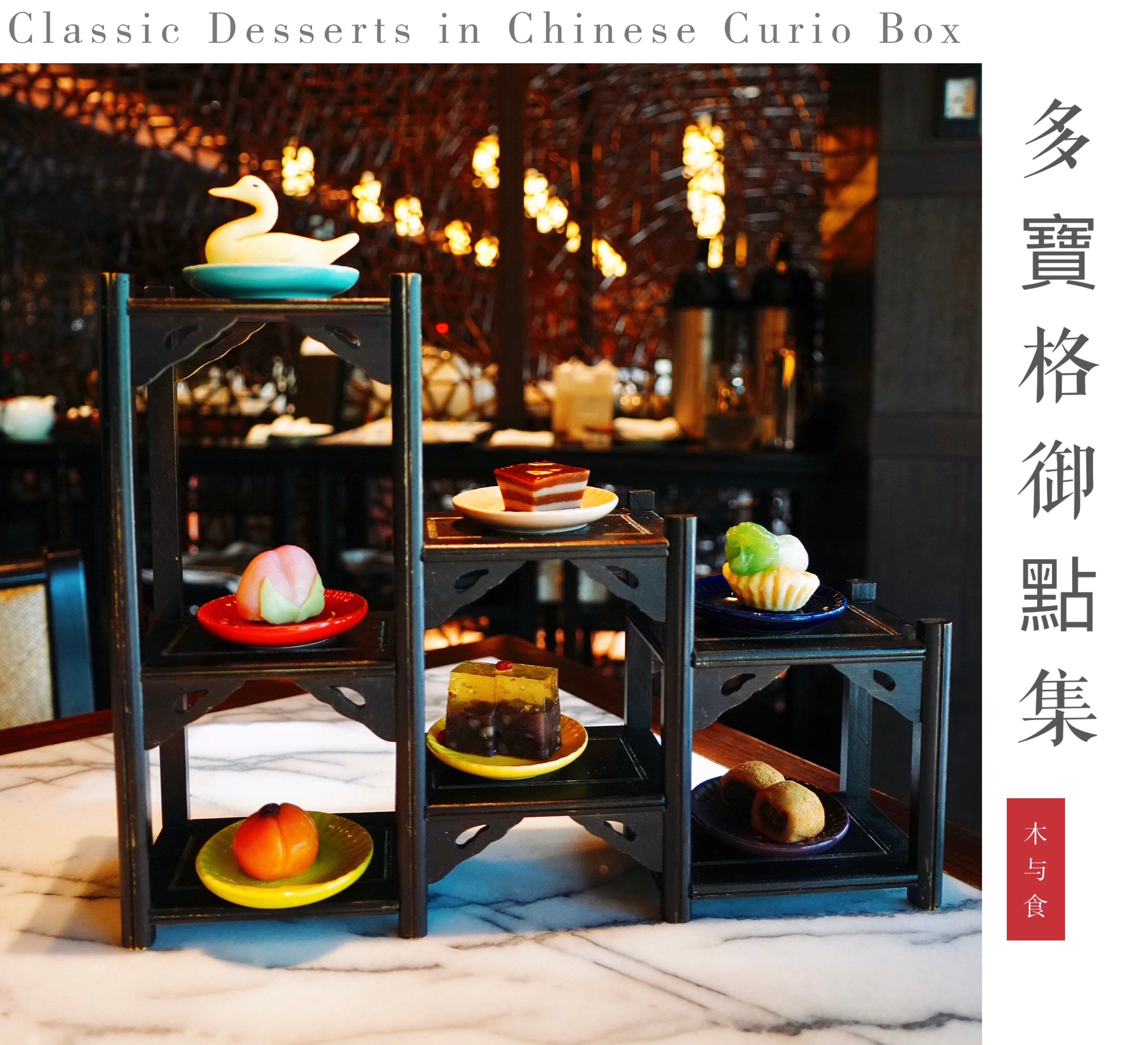
For my visit to Silks Palace, I was particularly interested in this Classic Chinese Dessert selection served in a Curio Box. For those unaware, the curio box was used to display curios (a rare or unusual object). Here the curios are replaced by hand-made curio-like snacks. Some of these are treasures found inside the museum!
These snacks would have been enjoyed by royalty and even the emperor in the past, but now can be enjoyed like afternoon tea by regular people.
Let's take a closer look at each of these intricately detailed snacks!

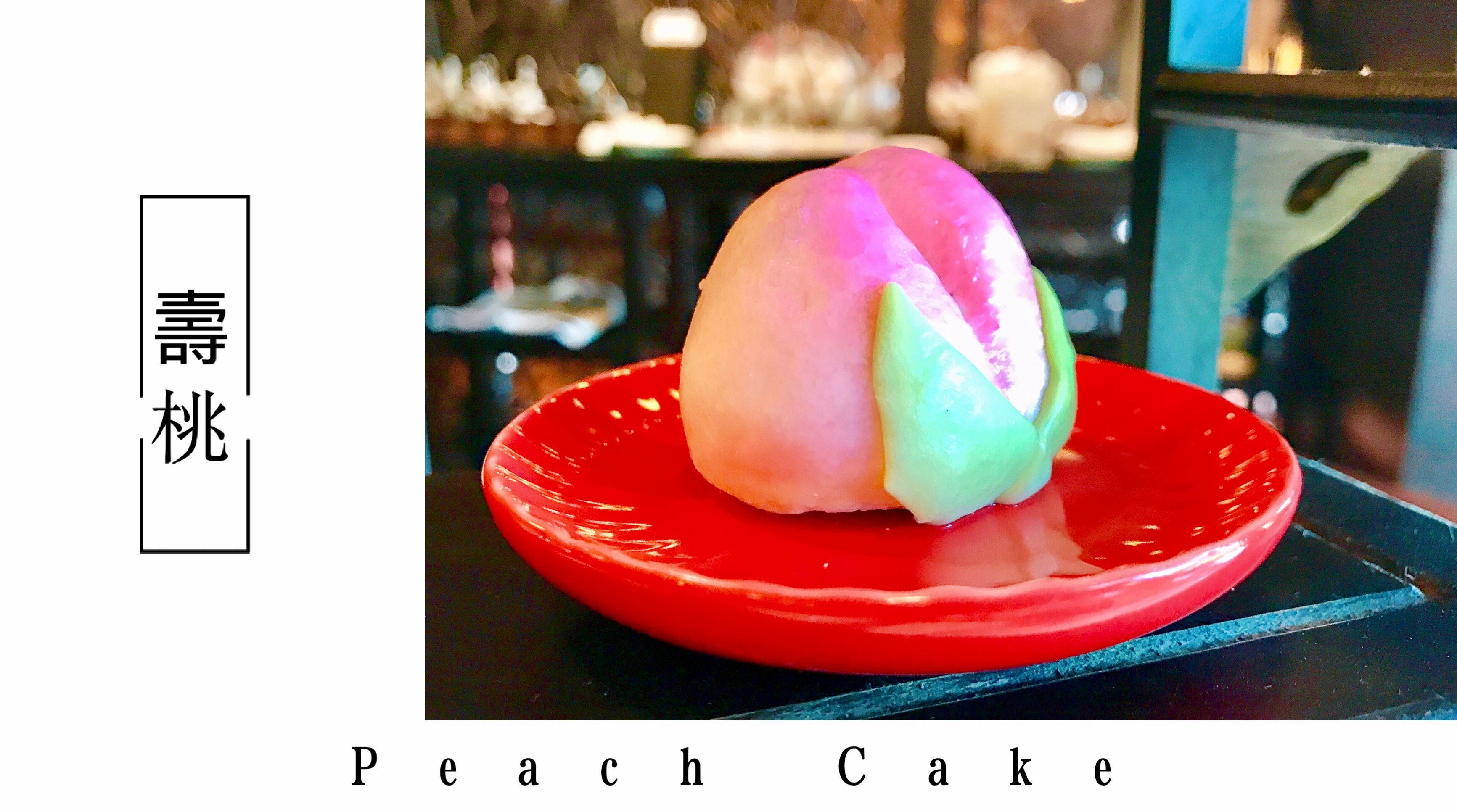


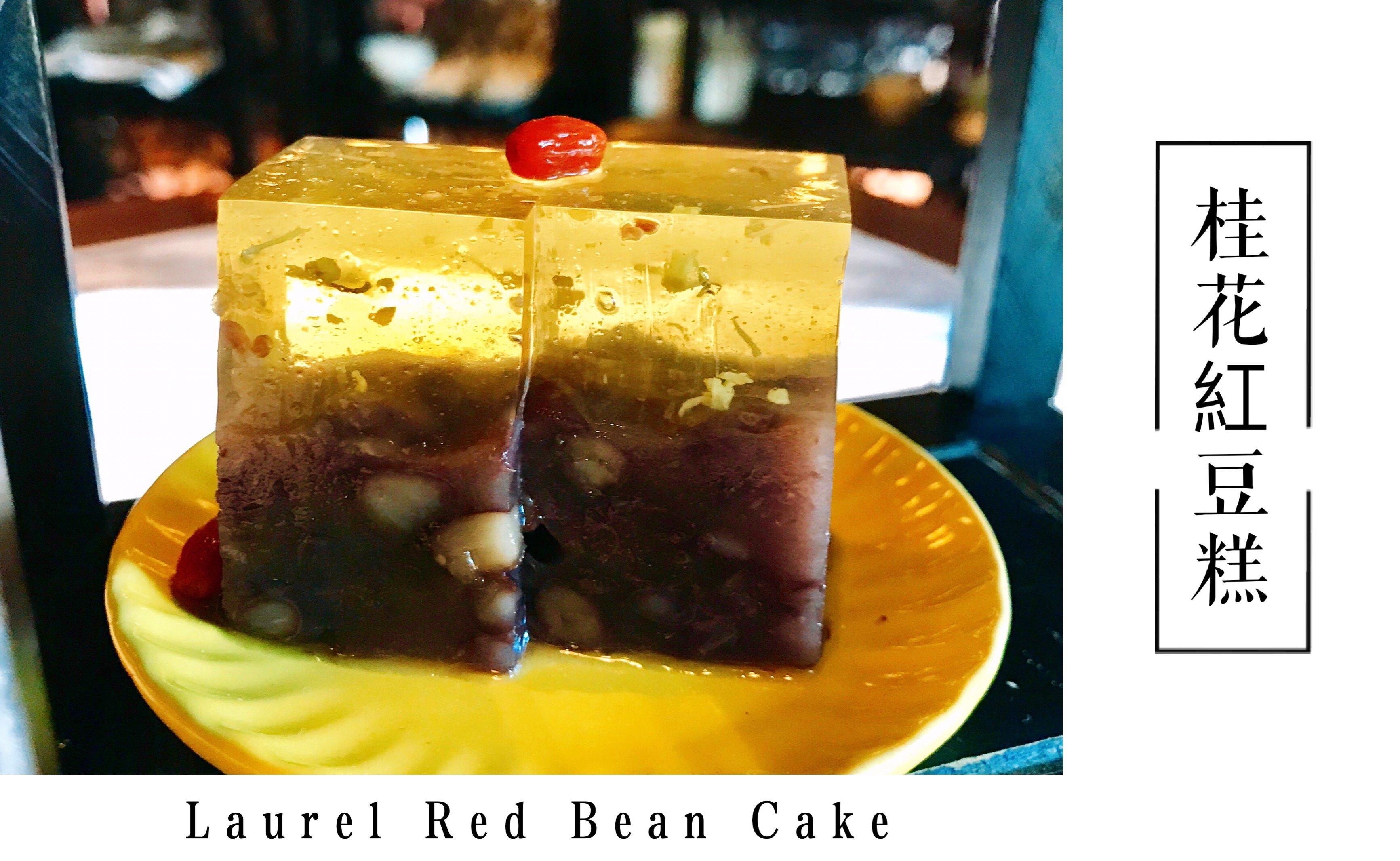


This is the souvenir section near the entrance of the restaurant. Many of the visitors we saw standing outside actually skipped on having a meal at the Silks Restaurant and instead, opted for some take home souvenirs.
Since it is the Mid Autumn Festival, moon-cakes are the main produce on offer but you will also find a wonderful selection of other mini-snacks, as well as china, cutlery, traditional Chinese pots and plates, and other novelty items!
Personally, I really like the moon-cake set which comes with the 12 different coloured mini plates. Actually, you might have noticed that the desserts were served on these mini plates each with their own colour!




And that wraps up our visit to the Silks Palace Restaurant where we learned about one of the traditional Chinese ways of enjoying tea as well as tasting the Chinese equivalent of afternoon tea served in the traditional alternative use curio box.
It was certainly a very visually appealing venue, not only regarding the food, but also the interior design and building itself.
When visiting this venue, I recommend both variants of the Chinese Curio box desserts. The other one as seen in the menu has some additional dim-sum dishes for those looking for something savoury. Dinner is also available but the dishes are less unique and a little bit pricey compared to other places serving the same food. Stick to the curio boxes which are definitely the unique selling point of this restaurant!
Remember to upvote this post if you liked it, follow if you haven't already, and leave a comment to let me know what you think!

又是一年中秋节,今年的佳节很幸运的和十一长假碰在了一起,喜上加喜,大家的脸上都是一副喜洋洋的表情。记得去年中秋,我已经来到了Steemit的大家庭,和朋友们分享我的生活故事和旅行经历是最幸福的事情。今天我想带大家走进台湾一家古色古香,秋韵十足的餐厅—故宫晶华。
早在很久以前,我就通过网络和书籍对这家餐厅有所了解,故宫晶华是一家以追求食物艺术之美为主题的餐厅,位于故宫博物院院区内。故宫博物院是台北市非常具有历史性的建筑物,华美而不失古韵,而故宫晶华这座建筑不仅传承了故宫博物院特有的历史特色,也加入了现代设计的思维和态度,耗时2年半,终于在2008年开业。眼前这个透明玻璃帷幕建筑就是故宫晶华餐厅所在的大楼,我猜透明玻璃的设计大大减少了新建筑对于老故宫建筑的冲突,并可以更好的在经典故宫建筑的基础上吸收,传承和创新。门口有很多人在等位,还好我提前预约了位置。
走进餐厅,发现门口迎客的玄关,餐桌之间的屏风,墙面上的装饰纹路和建筑上带有碎裂感的玻璃花纹遥相呼应。听说这是中国艺术品的特有纹路—冰裂纹,它是来自宋朝烧青瓷的技艺,利用釉的品质与烧窑的温度,使得艺术品外表自然形成裂纹。冰裂纹的元素几乎贯穿了整个餐厅的设计元素。我特别喜欢这个冰裂纹的设计,它不仅是历史的象征,是中国艺术文化的传承,就算拿到当下也是极具现代感的卓越设计,个人觉得纹路好酷。
中秋佳节的欢乐气氛为整个餐厅增添不少传统和古典的气息,灯柱的红色是中国最传统最喜庆的颜色。我注意到餐厅大堂的吊顶非常高,中央有着挑空六米的天井,像极了历史上描绘古代客栈的绘画,也让我想起这样古色古香的建筑,和大陆著名的《大董烤鸭》十分类似。不过进门之后的五分钟,环视周围之后,我就确定这是我非常喜欢的餐厅设计,传统又不失时尚的分子,典雅大气也不失历史的味道,真是古今交错的完美融合。大堂左右是另外两个用餐区,区域顶上的吊灯特别吸引我,形状像是西周时期的青铜乐器排钟的设计,颜色是淡淡的鹅黄色,给人宁静舒适的感觉。大堂的尽头是中式点心的开放式厨房,砂锅里的浓汤冒出阵阵清香,让我不由得感觉饿了。我们被安排坐在右侧的厅内,厅底的墙面挂着一副宋徽宗文会图,描绘的是每逢佳节文人雅士相聚品茶,吟诗作对,其乐融融的场景,和现在中秋的气氛真的相得益彰。
看着精致的菜单,我最终选择了多宝格糕点和有机高山乌龙茶,作为庆祝中秋的点心也是再好不过了。乌龙茶的茶具非常小资,整体感觉很协调,走的是简单干净的风格,那隽永香醇的茶味非常走心。而这个多宝格御点集是以清朝皇帝珍玩宝物为概念,将小点心做成了故宫镇馆之宝的古董模样,可谓是精巧可爱,视觉与味觉的盛宴,深得大家喜欢。
寿桃小巧可爱,里面是红豆馅。玉皇鸭做的栩栩如生,它的原材料是绿豆糕。这个做工精致的南瓜果,外层是用真正的南瓜做成,上面放了一颗小葡萄干,画龙点睛。桂花红豆糕和驴打滚也很好吃。这个翠玉白菜是故宫最有名的玉器雕刻了,珍宝是由一整块翠玉,利用天然的色泽,雕出一颗相似度几乎百分之百的白菜。想到玉石做的白菜已经觉得超级可爱,没想到这个抹茶粉制作成的白菜糕点更是萌化了,里面的黄豆馅也很好吃,搭配底下的饼干味道更好呢。最后这个也是故宫第二大珍宝,肉形石,吃起来有些像马来西亚的千层糕。
在把玩珍宝同时品味精致的点心之后,我们来到门口餐厅的纪念品商店,挑选限量月饼,并赏玩了精致的艺术品。有吃,有玩,有鉴赏,这就是故宫晶华餐厅太给我最完美的享受了。在这里再次祝大家中秋节快乐,美满幸福永远。谢谢大家和我一起品鉴台北故宫里的传统美食点心,之后还有更多有趣的美食日记要和大家分享。
